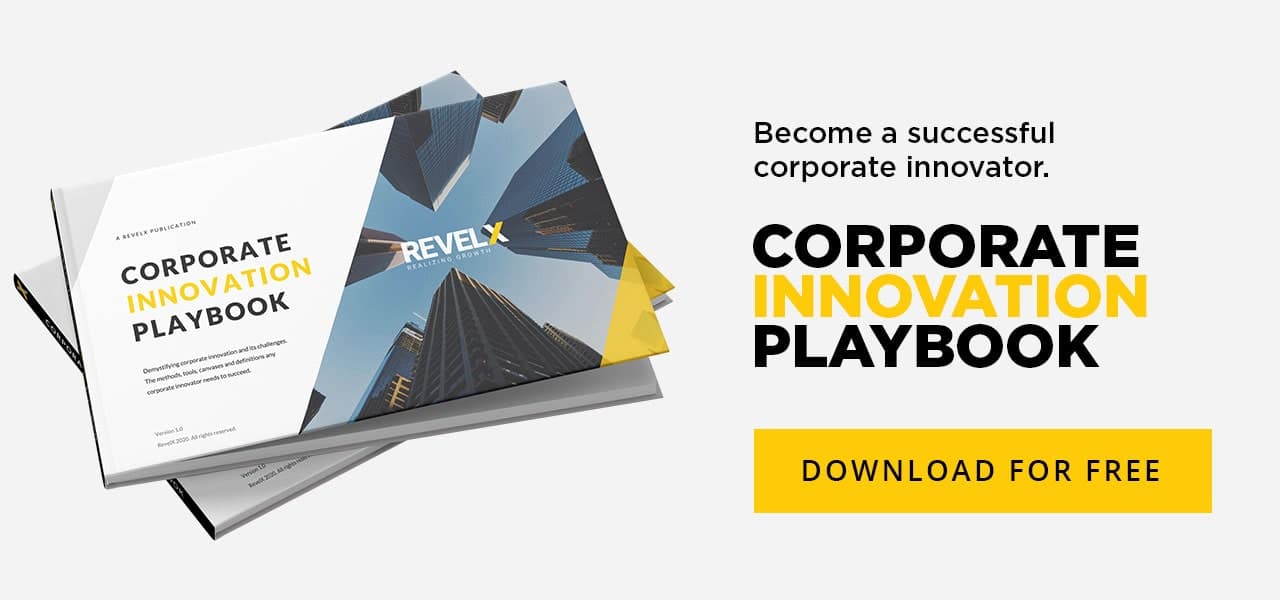Over the last year, I interviewed many CEOs of various international companies, large and small, profit and nonprofit, grownups, and scaleups in all sorts of industries. The leading question was always: “How do you organize your innovation most effectively?” The discussions were confidential, and content was often competitive and market sensitive. The results are short anonymous corporate stories. Honest and insightful. A great way to share knowledge and innovation experience.
The Academy for innovation
An interview with the CEO of a division of an insurance company
The company
Our company is one of the world’s leading insurance companies. With over 150,000 people we are active in more than 80 countries and are in business for more than 100 years. But in all its greatness we are also a very decentral organization. The geographical part that I am responsible for is around 4,000 people in total. As a result of our organizational structure, innovation is also strongly nestled into the regions. Its focus being improvement of the core, or Horizon 1 if you like to call it. We also dare to take small steps into more business model innovative areas.
The Academy
We focus on facilitating various innovation tracks and the change of the mindset of people. We have chosen for what we call a cultural change program. The program has three levels in which the intention is that all our employees in the end will participate. And we are well ahead of target, with already 40% of our people that have enrolled in the program. The three levels are Bronze, Silver and Gold. Bronze is a kick starter program, Silver is focused on a business challenge and Gold is the full MVS approach, building a new venture.
Level 1, Bronze
The first level of the program of the Academy is a 2-3-day starter program in which people learn the basics of innovation. It is a curriculum created to learn how innovation works. They get the theory on design thinking, lean startup and agile. We teach them the need to get out of the building, develop test cases and prototypes, etc. After 3-4 weeks pause, we ask the participants to come back and exchange learnings in an iterative cycle. They are also asked which of those learnings they can use in their normal day-to-day jobs and or what hurdles they encounter doing so.
Level 2, Silver
The second level or Silver Program is constructed around a real business challenge. The format is a broken-up (3-2 days) design sprint. We create teams of 5 people, that need to come up with a new solution and build a prototype. This takes place in the first 3 days of the sprint. Then they need to get out of the building and test and learn from potential customers. The last two days are validation, pivoting and pitch to the Innovation Council. The Innovation Council is a sort of a Dragon’s Den. Furthermore, the teams discuss and present their solution with the real business owner. A case last year was for instance a better and improved HR onboarding process for employees.
Level 3, Gold
When silver turns into gold, it becomes more interesting. This is when teams really set off. The Gold level is when teams build a minimum viable solution or MVS. It is taking it all to the final stage of go/no go within a Growth Lab setting. The prototype becomes a real solution, further tested and with a certified business case. The teams ask for launch to the Board of our region. At this stage there is also a connection to our Global Digital Factory. A centralized community for exchange. But also, a place where development occurs that is not taken place necessarily in the decentral areas.
Alignment
Most of the ventures in the Academy are projects next to the current business. Leadership needs to make sure that they are executed and seen as equal, or even more important than the day-to-day business. Every department also has its own digital innovation trainer. New ideas need to be aligned with the business owners and the corporate strategy, including budgets. As an example, one of the teams came up with a solution for better use of parking lots at our offices during the evening. A great idea, but too far away from our core insurance business. And instead of dropping it we transferred it outside the company. It is now operational as a service at a mobility services provider.
Corporate venturing
We also bring the outside world in. We have our own venture fund at HQ. Every year they organize in our region a Fintech day for which they invite interesting new startups to present their businesses. They organize one on one sessions to pitch to potential business owners. The mutual aim is to collaborate with our company. Pretty much on a case-by-case basis, not structured into some sort of incubator. In the early days our fund was struggling to get enough attention from startups. The fintech scene used to be rather hostile towards the legacy players. They were all focused on attacking them. But this has changed over time into a more collaborative style.
Learnings
Do we have areas for improvement? Oh yes. I agree it may look on the surface all tidy and neat. But because of some of the (structural) choices we have made, we have also some areas where we need to adjust, based on our learnings.
One of the first improvement areas is speed. We haven’t chosen from the start for dedicated full-time (or even half-time) people in the teams. This slows us down in the actual development. Not in the early stages of bronze and silver, but especially in the last level, where we need to step on the gas.
The second is the quality of the teams. The way we have structured our innovation endeavors is that we are very much dependent on the quality of people that enroll in the program of the Academy. The Academy became something like the recruiter for innovation teams. But with a handicap. We cannot handpick the team; they are not deliberately forged for an assignment.
The third area for improvement is the outside-in focus. Yes, sure we have something in place at HQ with the fund. But it is too far away from our people in the field. You guys at RevelX taught us the action-based learning principles in the Academy, but we didn’t implement the other part of inspiration from the outside world, for example visiting innovative leaders, startup marketplaces and events, etc. We need to make up for that.
And finally, we discovered that our leadership and project leads needed a separate curriculum and training focusing on the improvement of leadership skills and competencies in the innovative landscape: visionary, walk the talk, stamina, data-driven decision making, enabling, and coaching.
Let’s do it!
The ‘how to’ topic accrued out of the feedback that we got from readers of the book I have written on innovation with my esteemed colleague Matthijs Rosman called ‘DARE, The Mindset for Successful Innovators in the Digital Age’.
The purpose of the interviews is to create a new publication as successor of DARE. Do you want to join the conversation? Feel free to contact me at eric@revelx.nl.
Eric de Groot
Boardroom strategist with unparalleled creative brainpower. Always focused on growth. Creates speed by combining business modeling with inventive pragmatic solutions. Invests in involvement over a sustained period.
Related posts
Measuring Innovation: A guide to building investment confidence
Discover how innovation accounting ensures your business…
January 21, 2025
Introducing ISO 56001: The new standard in innovation management
ISO 56001 provides organizations with a structured…
January 14, 2025
Manual vs AI-powered subsidies search: A novel approach to public funding
Ever felt like finding the right subsidy feels like…
November 20, 2024




